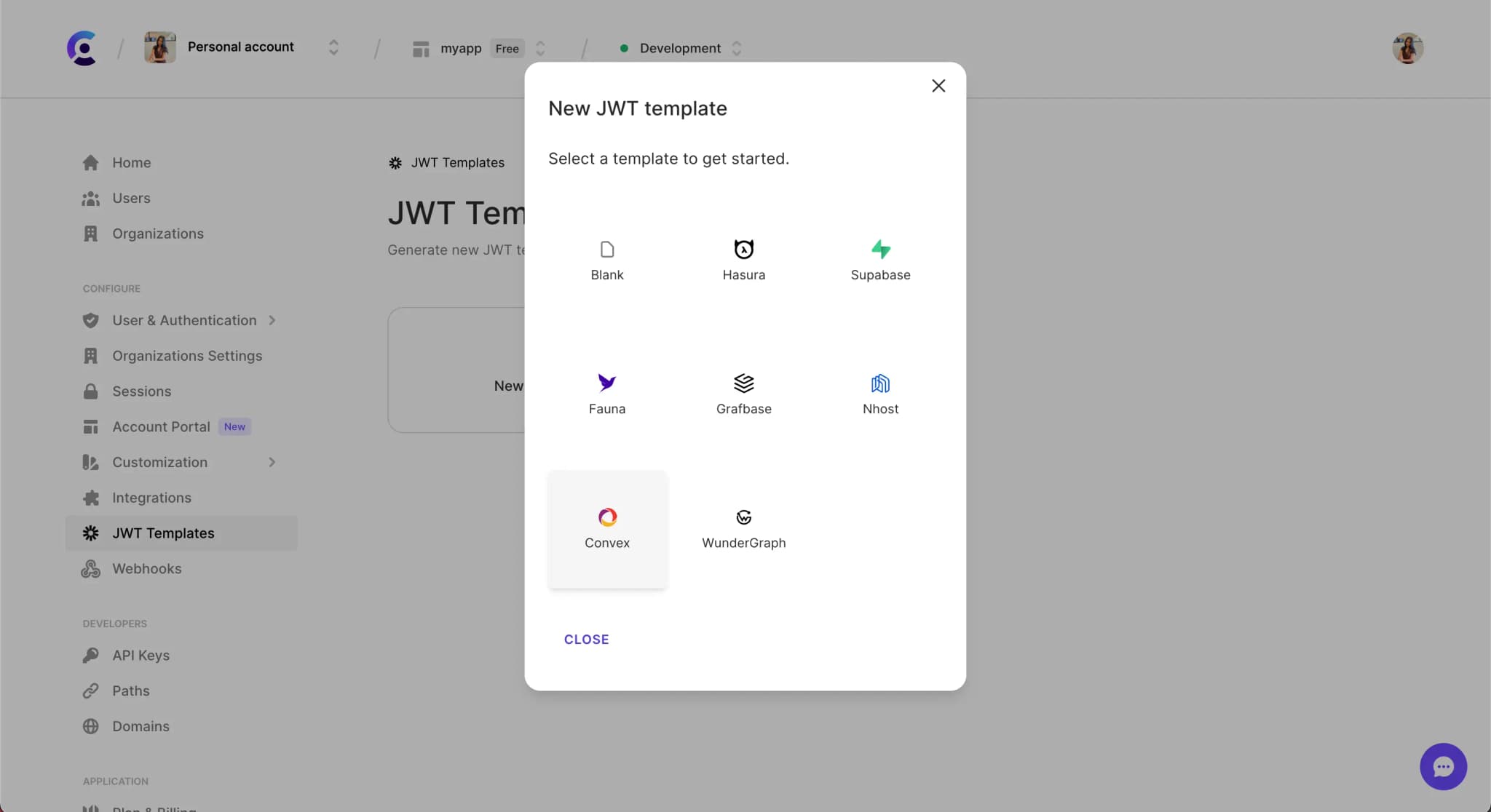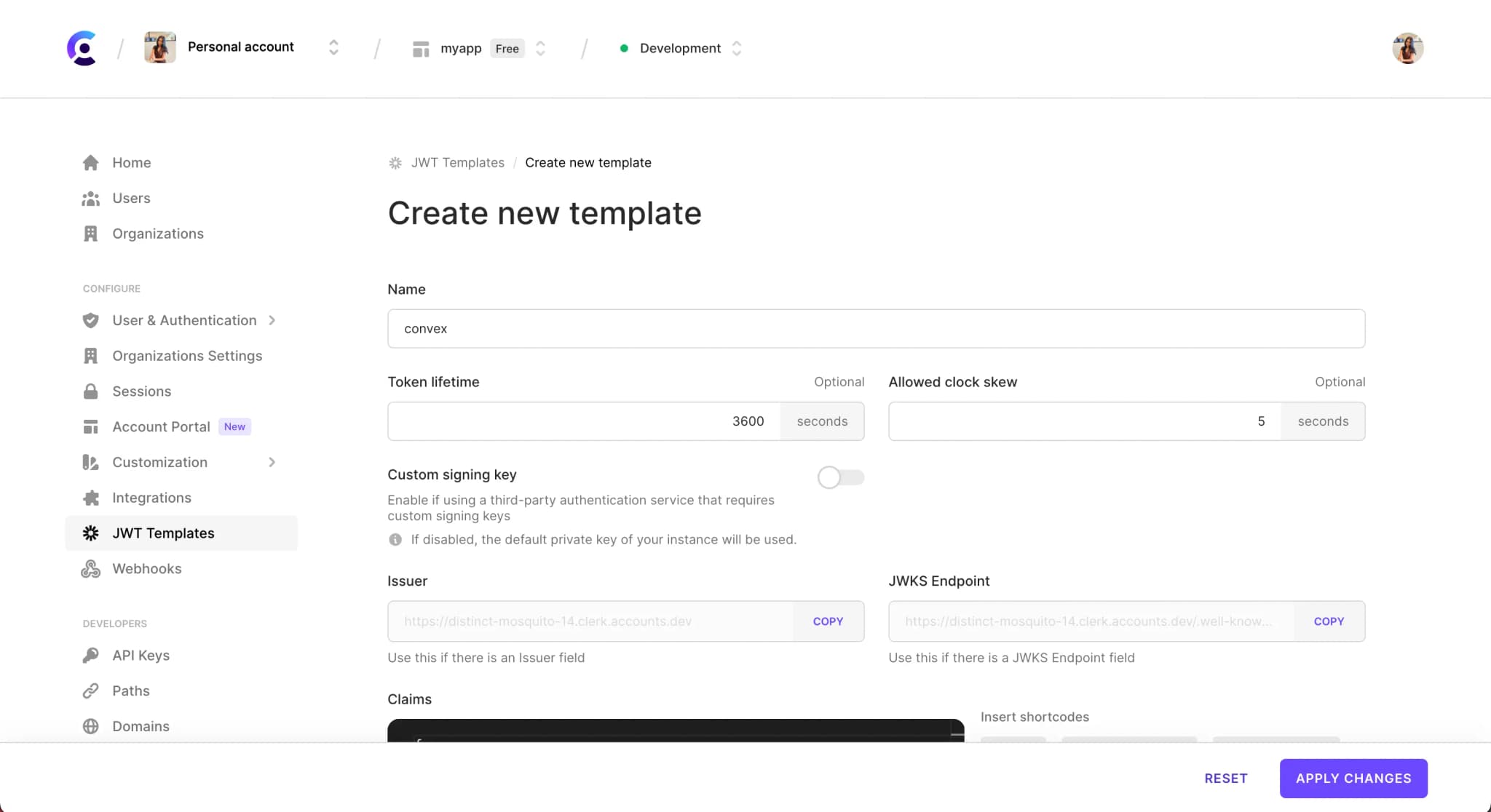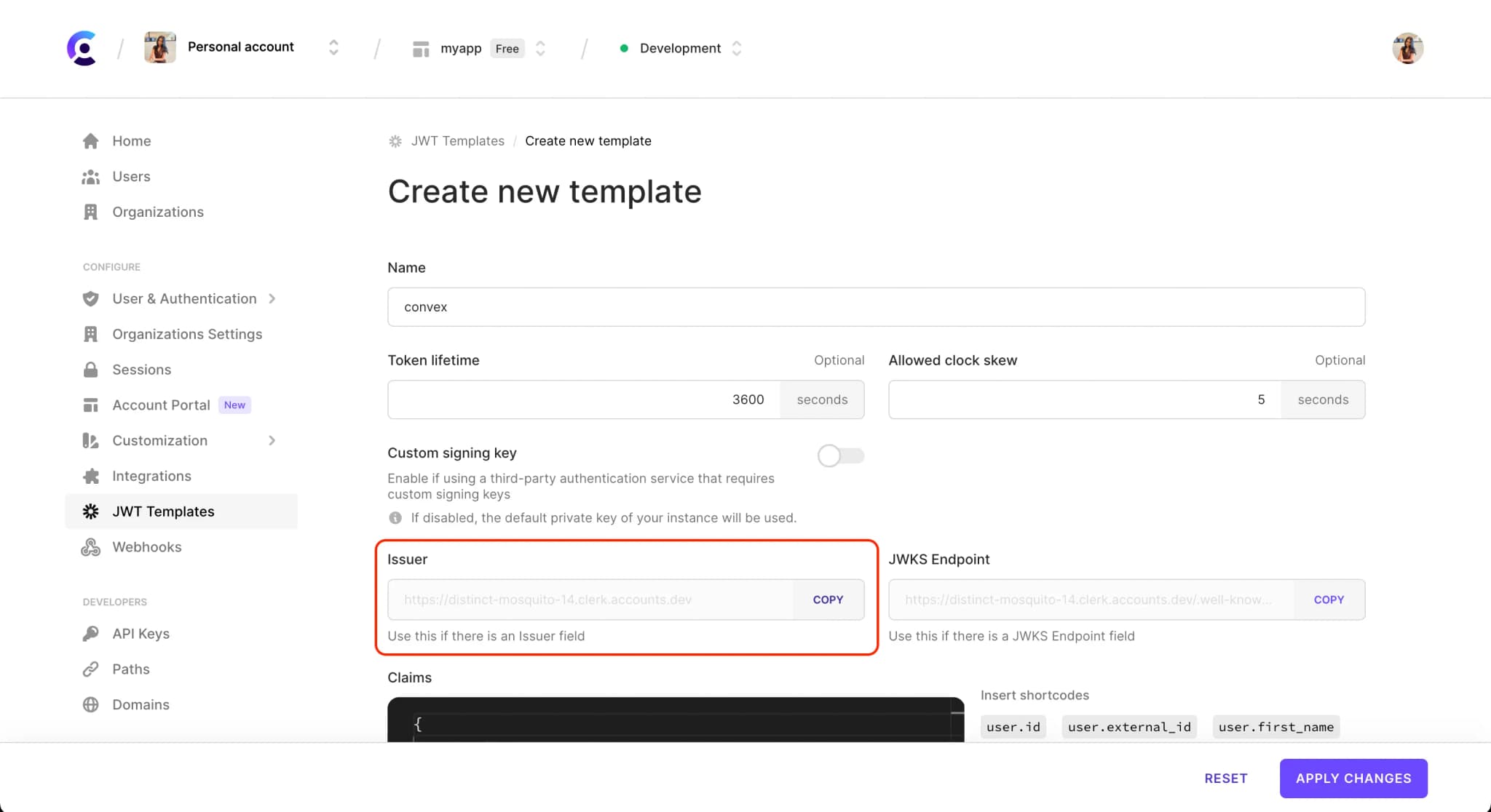Integrate Convex with Clerk
In the Clerk Dashboard, navigate to the JWT Templatespage. Select the New template button to create a new template based on Convex.

Once the Convex template is created, you will be redirected to the template's page. You can now configure the template to your needs.

The Convex template will pre-populate the default audience (aud) claim required by Convex. You can include additional claims as necessary. Shortcodes are available to make adding dynamic user values easy.

By default, Clerk will sign the JWT with a private key automatically generated for your application, which is what most developers use for Convex. If you so choose, you can customize this key.
Configure Convex
The next step is to configure Convex with the issuer domain provided by Clerk. From your Clerk JWT template screen, find the Issuer input and click to Copy the URL.

In your terminal, run the following command from your Convex app directory:
terminalnpx convex auth add
Paste the Issuer URL you copied when it prompts you for the identity provider's URL.
The application/client ID will need to match the aud claim (default is convex).
? Enter the identity providers Domain URL: https://your-issuer-url.clerk.accounts.dev/ ? Enter your application/client ID with this identity provider: convex ? Would you like to add another provider? No ? Configuration updated. Run npx convex dev or npx convex deploy to sync these changes.
Configure the providers
Both Clerk and Convex have Provider components that are required to wrap your React application to provide the authentication and client context.
import "../styles/globals.css"; import { useEffect } from "react"; import { ClerkProvider, useAuth } from "@clerk/nextjs"; import { ConvexProvider, ConvexReactClient } from "convex/react"; const convex = new ConvexReactClient(process.env.NEXT_PUBLIC_CONVEX_URL); function ClerkConvexAdapter() { const { getToken, isSignedIn } = useAuth(); useEffect(() => { if (isSignedIn) { convex.setAuth(async () => getToken({ template: "convex", skipCache: true }) ); } else { convex.clearAuth(); } }, [getToken, isSignedIn]); return null; } export default function MyApp({ Component, pageProps }) { return ( <ClerkProvider publishableKey={process.env.NEXT_PUBLIC_CLERK_PUBLISHABLE_KEY} > <ConvexProvider client={convex}> <ClerkConvexAdapter /> <Component {...pageProps} /> </ConvexProvider> </ClerkProvider> ); }
Access user identity
In some cases, you may need to access the user when using Convex queries and mutations. You can use the getUserIdentity() method provided on the auth property, which is passed to the context argument of every Convex function invocation.
convex/getUser.tsimport type { UserIdentity } from 'convex/server'; import { query } from './_generated/server'; export default query(async ({ auth }): Promise<UserIdentity | null> => { const identity = await auth.getUserIdentity(); return identity; });
The identity object should match the openID spec, you can update the JWT template to include them for example:
{ "email": "{{user.primary_email_address}}", "picture": "{{user.profile_image_url}}", "given_name": "{{user.first_name}}", "family_name": "{{user.last_name}}", "email_verified": "{{user.email_verified}}" }